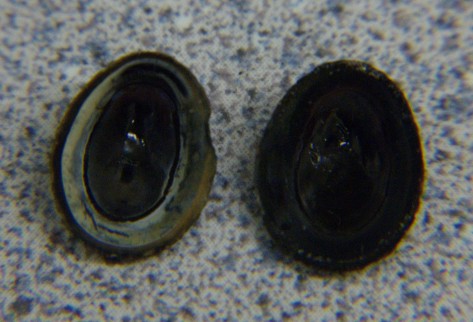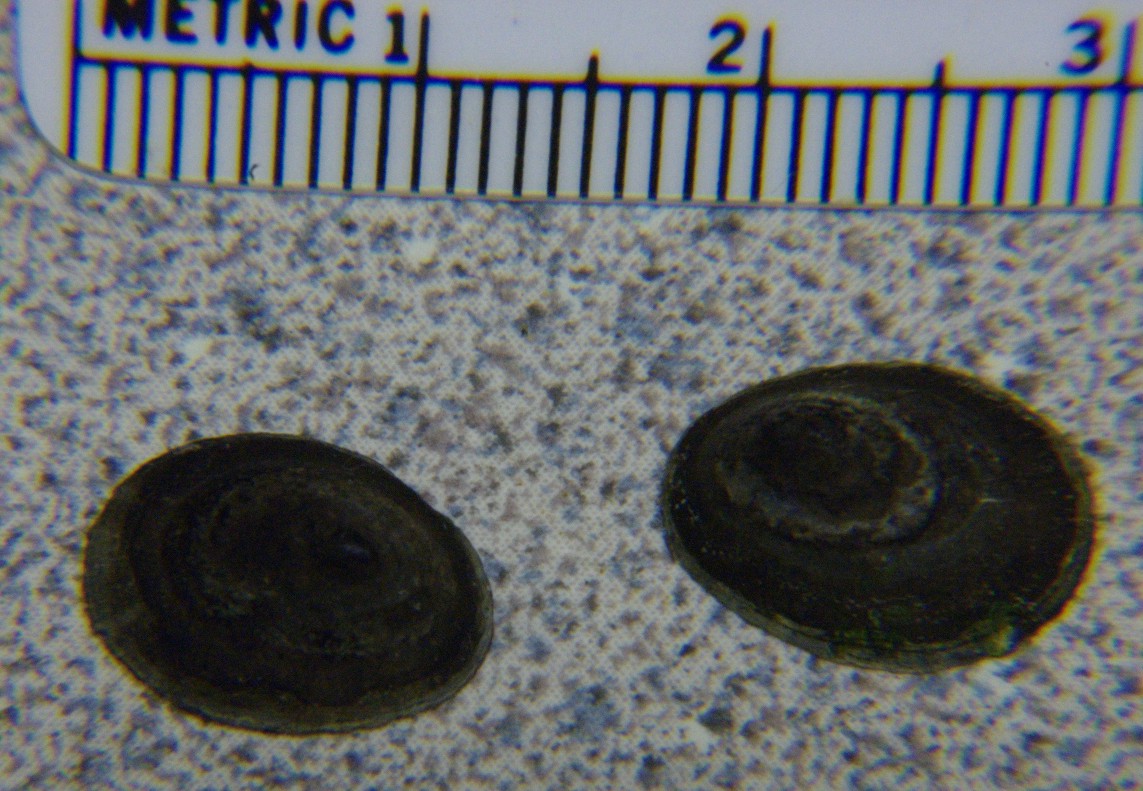Note: Kozloff's key says this species is usually uniformly brown or olive color. Several of the other references, however, show a shell with a pattern of prominent white blotches.
Carlton (2007) lists this species as Lottia fenestrata, so its name may have been recently changed.
How to Distinguish from Similar Species:Tectura scutum usually has a height not more than 1/3 the width, usually has a pattern of blotches, and can grow to more than 5 cm diameter.
Geographical Range: Aleutian Islands to lower Baja California
Depth Range:
Habitat: Frequently found on smooth boulders surrounded by sand in the mid to lower intertidal.
Biology/Natural History: Some references show a shell with an interior which is almost entirely white except for a small brown apical blotch; and a pattern of radiating white lines interspersed with brown on the outside. Some say that the apex is slightly off center. This species was formerly considered to be a subspecies of Notoacmaea (now Tectura) scutum. The aperture is said to be nearly circular. These limptes often crawl down the surface of the rock to below the surface of the sand at low tide.
The name "fenestrata" refers to the checkerboard pattern of
white and
brown that is seen around the exterior margin of at least some of these
limpets. Morris (1966) acknowledges the wide diversity of
coloration
within this species by recognizing two subspecies: A.
fenestrata fenestrata, which is grayish green with flecks
of pale
yellowish. Its inside is bluish white with a narrow brown
inside
border. A.
fenestrata cribraria,
the northern form, is dark within the shell (almost solid
brown).
There are many intergrades where the two forms meet (central CA).
| Return to: | |||
| Main Page | Alphabetic Index | Systematic Index | Glossary |
References:
Dichotomous Keys:Carlton, 2007 (as Lottia fenestrata)
Flora and Fairbanks, 1966 (as Acmaea cribraria)
Kozloff, 1987, 1996
Smith and Carlton, 1975 (as Notoacmea fenestrata)
General References:
Harbo,
1997
Lamb
and Hanby, 2005
Morris,
1966
Rice,
1973 (as Notoacmea
fenestrata)
Ricketts
et al., 1985 (as Notoacmea
fenestrata)
Scientific Articles:
Web sites:
General Notes and
Observations: Locations,
abundances, unusual behaviors:

Inside view of the same two shells above. Note how
the inside
is quite dark, blue-gray, with a large darker rown bblotch at the apex.
Authors and Editors of Page:
Dave Cowles (2008): Created original page
CSS coding for page developed by Jonathan Cowles (2007)
